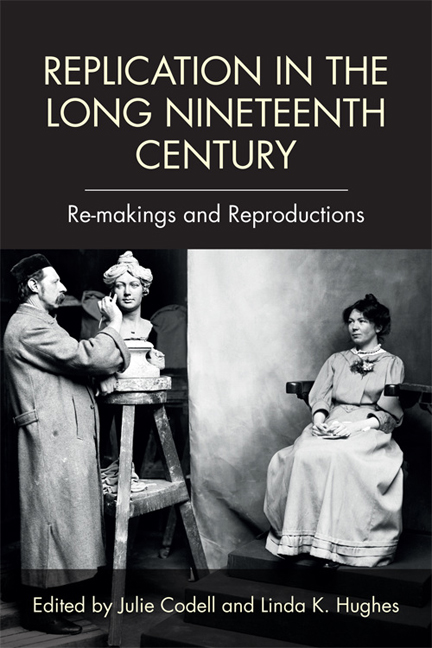1 - Introduction: Replication in the Long Nineteenth Century – Re-makings and Reproductions
Published online by Cambridge University Press: 11 August 2018
Summary
In 2014 a Wallace Collection exhibition's online blog asked,
why would you pay a vast sum for a copy piece of furniture? … In the second half of the 19th century and the first decade of the 20th century, many of the best pieces of 18th-century French furniture were copied by skilled cabinet-makers in Paris and London. Rather than being dismissed as mere “reproductions,” these copies were of great quality and were highly prized by their owners. (“To copy or not to copy” n.p.)
The owners of these replicas included the Marquis of Hereford, whose former home is now the Wallace Collection. This furniture exhibition included comparisons between original works and their copies. The nineteenth-century cabinetmakers did not pursue exact reproductions, however, and often the wood and finish were better than the eighteenth-century originals, though the marquetry was simpler and less skillful (Figure 1.1).
In the same century Continental scientists Alcide d'Orbigny (1802–57) and August E. Reuss (1811–73), two of the earliest micropaleontologists, made a “plaster army” of microfossil models. Drbigny, who earned Charles Darwin's praise, saw a difficulty in disseminating his work on microfossils to a wider audience because of the specimens’ small size. His carved scale models of foraminifera microfossils from limestone are now in the Muséum national d'histoire naturelle in Paris. He sold plaster replicas in sets to accompany his 1821 publication of the first classification of foraminifera. Later Václav Frič (1839–1916) made fresh models under the supervision of A. E. Reuss. One set can now be found in the Natural History Museum in London. Other sets are still being used to teach micropaleontology students (Miller 263–74). Scientists were not the only fashioners of reproductions: glass artists Leopold Blaschka (1822–95) and his son Rudolf made models, including those of invertebrate animals (Loudon et al. 68ff.).
These examples, from French furniture to minuscule foraminiferal microfossils, point toward what Miles Orvell terms the “culture of replication” (Orvell 39), a phenomenon that crosses the boundaries among reproduction, imitation, and copies.
- Type
- Chapter
- Information
- Replication in the Long Nineteenth CenturyRe-makings and Reproductions, pp. 1 - 20Publisher: Edinburgh University PressPrint publication year: 2017



